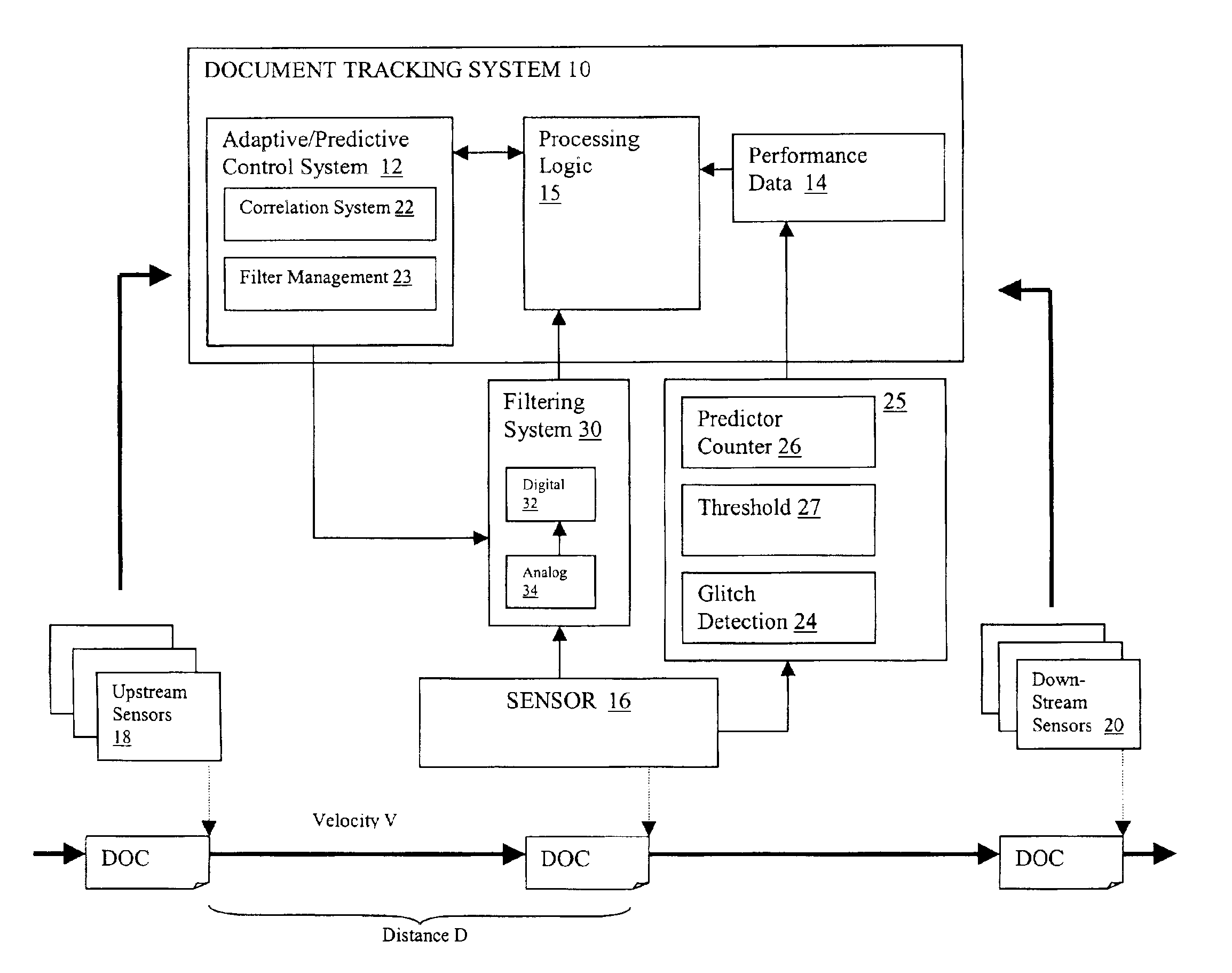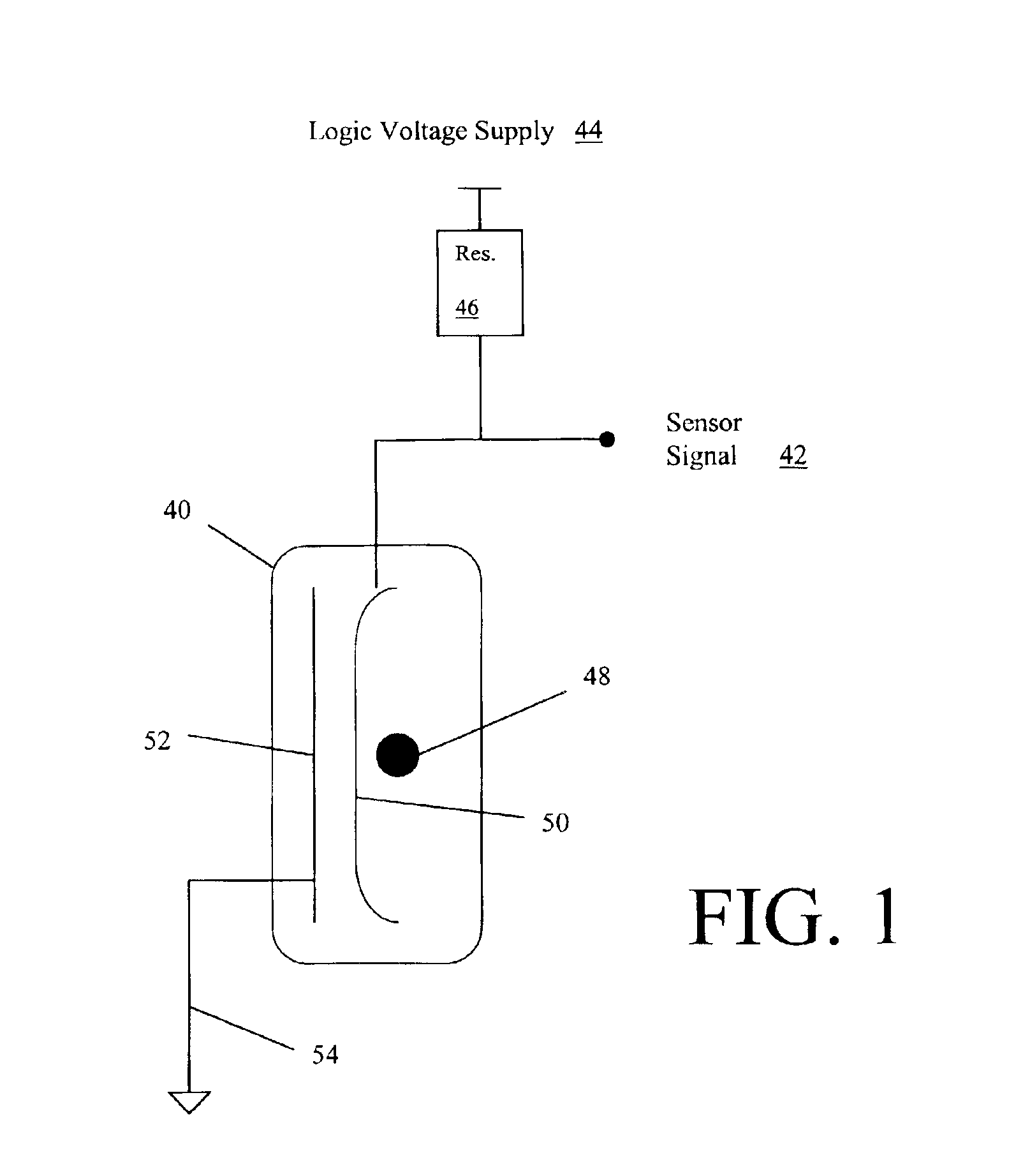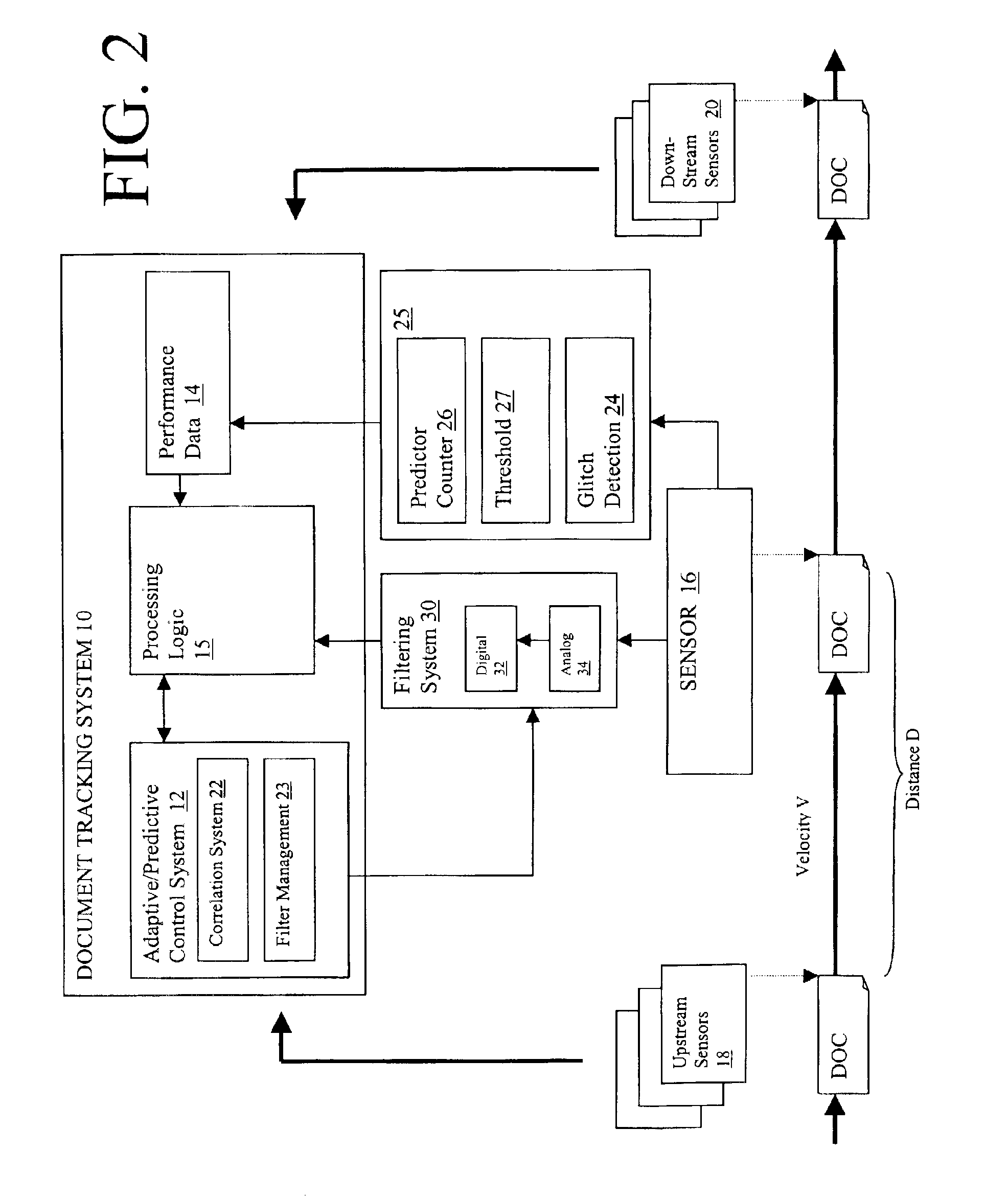Adaptive and predictive document tracking system
a document tracking and predictive technology, applied in the field of document sorting and processing, can solve the problems of unrecoverable and lost information on the check, logic errors, false indications of document presence or absence, etc., and achieve the effect of improving the reliability of the document tracking function and improving the handling and processing of sensor outputs
- Summary
- Abstract
- Description
- Claims
- Application Information
AI Technical Summary
Benefits of technology
Problems solved by technology
Method used
Image
Examples
Embodiment Construction
Document Tracking System
[0021]Referring now to FIG. 2, document tracking system 10 is shown that provides various techniques for improving the handling of imperfect sensor outputs, as well as the improvement of system tracking performance for a document processor. In the exemplary embodiment depicted in FIG. 2, a sensor 16 is provided for sensing a document (DOC) as it travels in a transport past the sensor 16. When the document is sensed, a sensing signal is sent to filtering system 30, which cleans up the signal as necessary, converts it to a logical one or zero, and passes the result to processing logic 15. Processing logic 15 receives the filtered signal and performs any necessary operational and tracking functions. For instance, processing logic may determine that the operation of the document processor should halt if one or more received signals indicate a jamming condition.
[0022]In addition to sensor 16, the document processor includes upstream sensors 18 and downstream senso...
PUM
 Login to View More
Login to View More Abstract
Description
Claims
Application Information
 Login to View More
Login to View More - R&D
- Intellectual Property
- Life Sciences
- Materials
- Tech Scout
- Unparalleled Data Quality
- Higher Quality Content
- 60% Fewer Hallucinations
Browse by: Latest US Patents, China's latest patents, Technical Efficacy Thesaurus, Application Domain, Technology Topic, Popular Technical Reports.
© 2025 PatSnap. All rights reserved.Legal|Privacy policy|Modern Slavery Act Transparency Statement|Sitemap|About US| Contact US: help@patsnap.com



